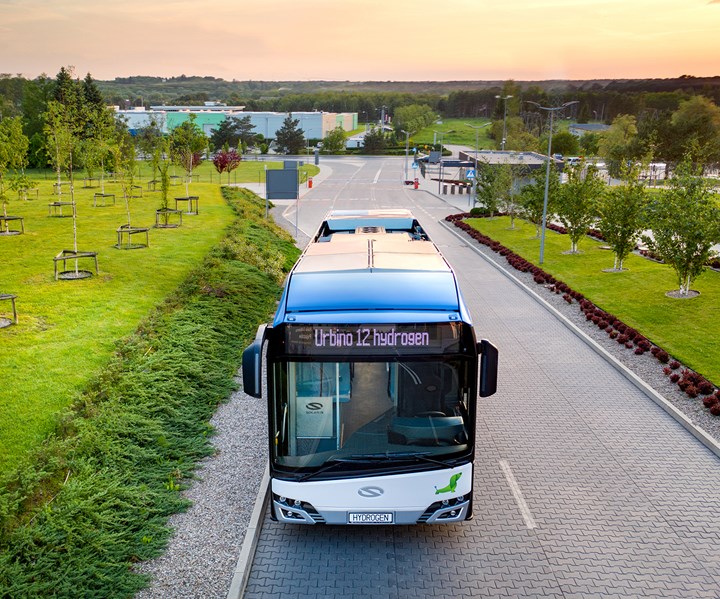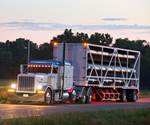Hexagon awarded fuel systems order for hydrogen buses
The Solaris Urbino 12 hydrogen buses will reportedly have a driving range of up to 350 kilometers on one fill, with weight savings of 20% compared to previous models.
Share

Solaris Urbino 12 hydrogen bus. Source | Hexagon Composites ASA
Agility Fuel Solutions, a Hexagon Composites (Alesund, Norway) business, has been awarded an order to supply twelve fuel systems for Solaris’ (Owińska, Poland) new hydrogen bus model. The Solaris Urbino 12 hydrogen bus will reportedly have a driving range of up to 350 kilometers on one fill. With the Agility Type 4 hydrogen fuel system, Solaris says it has reduced the mass of its bus fuel system by approximately 20% compared to the previous model.
The Italian city of Bolzano is the first customer to order Solaris Urbino 12 hydrogen buses, and Régie Autonome des Transports Parisiens (RATP) has signed an agreement with Solaris for tests of the Urbino 12 hydrogen bus. The buses will be tested in regular passenger traffic during the second half of 2020, preparing for the transition to a zero-emissions vehicle fleet. Deliveries of the Agility hydrogen bus systems are scheduled for the third quarter of 2020.
“We are excited to continue our long partnership with Solaris, adding hydrogen technology to the clean fuel portfolio. During the last decade, Hexagon has delivered more than 1,000 CNG [compressed natural gas] fuel systems to Solaris’ low-emission bus fleet, ensuring sustainable public transport to European citizens,” says Eric Bippus, senior vice president of sales and marketing at Agility Fuel Solutions. “This is an important step in the expansion in the European hydrogen bus market — a market representing a major opportunity for zero-emission hydrogen public transport.”
“The Solaris Urbino 12 hydrogen, which had its world premiere in June this year, complements Solaris’ e-mobility offerings. Hydrogen fuel cell and battery electricity technologies will complement each other perfectly and benefit from the technological progress of electric drivelines and their components,” says Mateusz Figaszewski, director of the E-mobility Department at Solaris Bus & Coach S.A.
Related Content
-
Longtime partner New Flyer selects Hexagon Purus to outfit hydrogen transit bus
Hexagon Purus will continue to supply Type IV hydrogen tanks for the Xcelsior Charge H2 fuel cell electric bus, the tanks of which will be produced out of Hexagon’s new Maryland facility.
-
New Flyer selects Hexagon Purus H2 tanks for fifth consecutive year
Type 4 tanks will continue to be supplied for the mass mobility provider’s Xcelsior Charge FC fuel cell electric transit buses.
-
Composites reinvent transportation
Celebrating National Composites Week, CW shares ways in which composites continue to evolve mass transit.

.jpg;width=70;height=70;mode=crop)













.jpg;maxWidth=300;quality=90)
